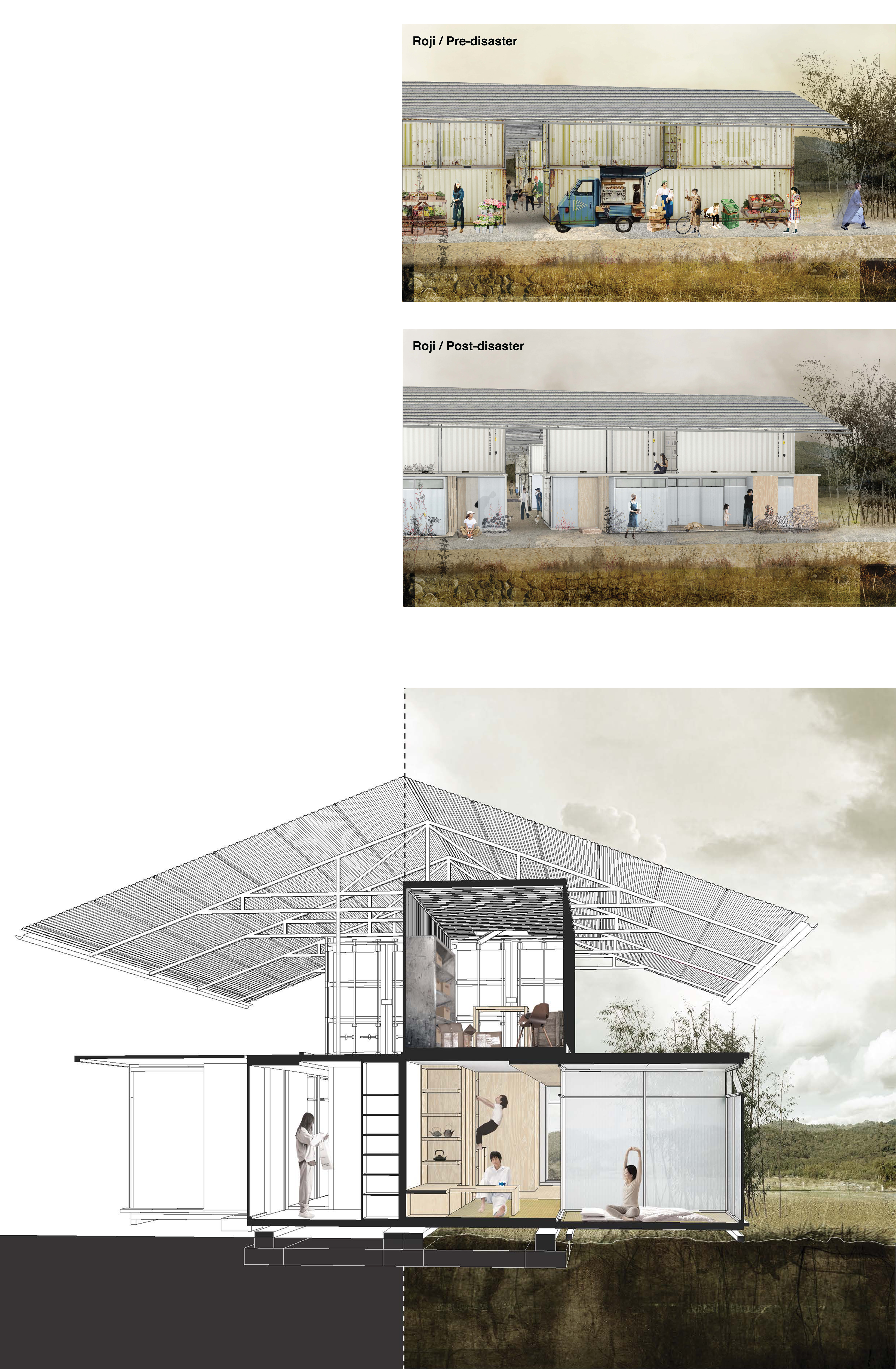Japan lies along the western edge of the Ring of Fire and is one of the most tectonically active countries in the world. With more than 2000 fault lines, it experiences over 15 hundred earthquakes annually; 750 thousand homes were destroyed by these 4 earthquakes alone. This thesis proposes an alternative to the conventional temporary housing model for disaster victims across Japan, taking cues from vernacular architectural elements and the ephemeral nature of Japanese buildings. My project aims to supply a flexible, modular built environment that can restore community resilience in times of crisis. In post-disaster situations, ties to the socio-geographic environment are broken, leaving the recently dispossessed to share a common ground rooted in displacement. My thesis argues that re-contextualization and the process of reclaiming one’s home can provide a powerful framework that will support and connect individuals at their most vulnerable moments.



